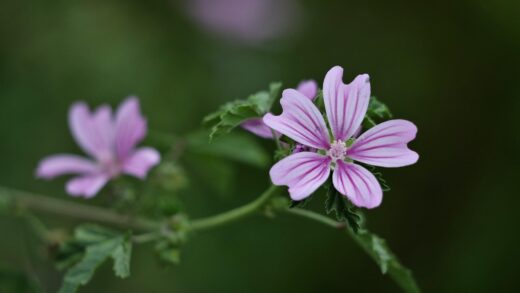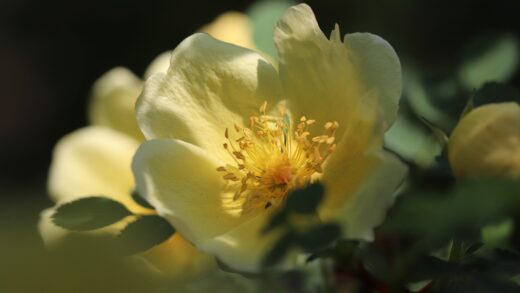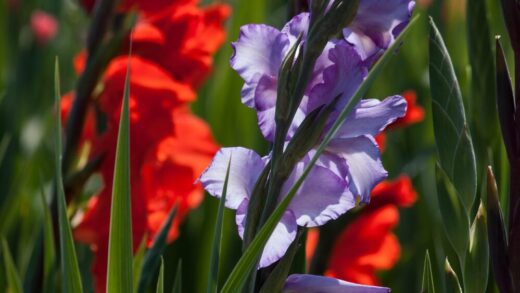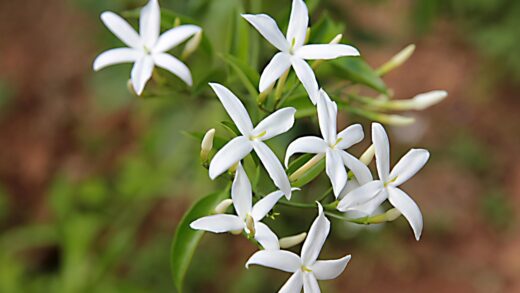One of the most appealing attributes of love-in-a-mist for the low-maintenance gardener is its modest appetite. This is not a plant that demands a rich diet or frequent feeding to perform well. In fact, providing it with an excess of nutrients, particularly nitrogen, is one of the surest ways to achieve a disappointing result. An overly fertile environment will stimulate the plant to produce an abundance of lush, weak, and floppy foliage at the direct expense of the delicate, intricate flowers that are its primary charm. Therefore, the most effective approach to fertilizing love-in-a-mist is one of restraint, focusing on creating a healthy, balanced soil from the outset rather than relying on a regimen of supplemental feeding throughout its growth cycle.
The plant’s preference for lean conditions is a reflection of its origins in the Mediterranean, where it often grows in soils that are not exceptionally rich in organic matter. It has adapted to thrive by efficiently extracting the nutrients it needs from its surroundings. This means that for the average garden, the existing soil fertility is often more than sufficient to support a healthy crop of love-in-a-mist. Before reaching for a fertilizer container, it is always best to assess the quality of your soil. If you have a history of successfully growing other flowering annuals without much feeding, then it is highly likely that love-in-a-mist will also flourish under the same conditions.
The most beneficial nutritional support you can provide is not in the form of a liquid feed or granular fertilizer, but in the preparation of the soil before the seeds are even sown. Incorporating a modest amount of well-rotted organic matter, such as garden compost or aged manure, into the top layer of the soil is the ideal way to provide a slow, steady release of essential nutrients throughout the plant’s life. This single application at the beginning of the season improves the soil’s structure and water-holding capacity while delivering a balanced diet that supports steady growth without over-stimulating the production of leaves.
If you are growing love-in-a-mist in containers, the nutritional dynamics are slightly different. The potting mix contains a finite supply of nutrients that will be gradually depleted as the plant grows. However, the principle of lean feeding still applies. Most high-quality commercial potting mixes contain enough slow-release fertilizer to sustain the plant for its first several weeks of growth. After that, a very dilute, occasional feeding with a fertilizer formulated for flowering plants might be beneficial, but it should be applied sparingly and with caution to avoid promoting excessive foliage.
The role of key nutrients
To understand why love-in-a-mist has such specific nutritional needs, it is helpful to understand the basic roles of the three primary macronutrients: nitrogen (N), phosphorus (P), and potassium (K). Nitrogen is the engine of green, leafy growth. It is a fundamental component of chlorophyll, the molecule that plants use to convert sunlight into energy. An abundance of nitrogen will tell the plant to focus its resources on producing more leaves and stems. While this is desirable for a lawn or a spinach crop, for a flowering plant like love-in-a-mist, it results in a lush but flowerless display.
More articles on this topic
Phosphorus (P), in contrast, plays a crucial role in root development, energy transfer, and, most importantly for our purposes, the processes of flowering and seed production. A sufficient supply of phosphorus is essential for the plant to form abundant, high-quality blooms. This is why fertilizers formulated for flowering plants, often referred to as “bloom boosters,” typically have a higher middle number in their N-P-K ratio. These formulas provide the necessary phosphorus to encourage the plant to switch from vegetative growth to its reproductive, flowering phase.
Potassium (K) is the third key player, often thought of as the nutrient for overall plant health and vigor. It is vital for regulating a plant’s water usage, strengthening its cell walls, and enhancing its resistance to diseases, pests, and environmental stresses like drought and temperature fluctuations. A plant with adequate potassium is simply a stronger, more resilient plant. For love-in-a-mist, sufficient potassium helps to ensure that its delicate stems are as sturdy as possible and that it can withstand minor periods of stress without significant setbacks.
Given these roles, it becomes clear why a balanced or a low-nitrogen, high-phosphorus fertilizer is the most appropriate choice if any feeding is deemed necessary at all. The goal is to provide just enough nitrogen to support healthy foliage development without going overboard, while ensuring that the plant has ample phosphorus and potassium to fuel robust flowering and maintain its overall health. This targeted nutritional strategy is the key to unlocking the plant’s full blooming potential without sacrificing its delicate and graceful form.
Preparing the soil for planting
The most effective and sustainable way to meet the nutrient needs of love-in-a-mist is through careful soil preparation before planting. This proactive approach sets the stage for a successful season and largely eliminates the need for any subsequent fertilization. The primary goal is to create a soil that is biologically active, well-draining, and contains a slow-release source of balanced nutrients. The best way to achieve this is by incorporating well-decomposed organic matter into the planting area.
More articles on this topic
Garden compost is the ideal soil amendment for this purpose. It is a treasure trove of balanced nutrients, beneficial microorganisms, and stable organic matter that improves soil structure. A few weeks before you plan to sow your seeds, spread a layer of compost, about 2 to 4 centimeters thick, over the surface of the bed. Gently work this into the top 10 to 15 centimeters of soil with a garden fork or tiller. This process not only distributes the nutrients but also aerates the soil, creating a welcoming environment for young roots to explore.
If your soil is known to be particularly poor or depleted of nutrients, you can supplement the compost with other natural amendments. A small amount of bone meal can be worked into the soil to provide a slow-release source of phosphorus, which will specifically support strong root growth and abundant flowering. Similarly, a light dusting of wood ash can supply potassium and help to raise the soil’s pH if it is on the acidic side, bringing it closer to the neutral-to-alkaline range that love-in-a-mist prefers. These amendments should be used judiciously, as a little goes a long way.
It is equally important to know what to avoid when preparing the soil. Steer clear of fresh, un-rotted manures, as they are often too high in nitrogen and can “burn” the tender roots of seedlings. Likewise, avoid using aggressive, high-nitrogen chemical fertilizers during the soil preparation phase. The philosophy should be to feed the soil, not the plant. By creating a healthy, living soil ecosystem, you provide the plant with all the tools it needs to find and absorb the nutrients it requires at its own pace, leading to balanced, natural growth.
Fertilization during the growing season
For love-in-a-mist planted in a garden bed with reasonably good, compost-amended soil, there is typically no need for any additional fertilization throughout its entire life cycle. The initial soil preparation provides a sufficient reservoir of slow-release nutrients to see the plant from seedling to seed pod. Adding more fertilizer is likely to do more harm than good, upsetting the natural balance and pushing the plant towards excessive vegetative growth rather than the desired floral display. The best course of action in most cases is to simply let the plant be.
There are, however, a few specific situations where a very light feeding might be considered. If the plants are showing signs of a nutrient deficiency, such as widespread yellowing of the leaves (not just the oldest, lowest leaves) or stunted growth despite adequate water and sun, a nutrient boost may be warranted. This is more likely to occur in very sandy soils where nutrients leach away quickly, or in container plantings where the nutrient supply is finite. In these scenarios, a single, very dilute application of a suitable fertilizer can help to get the plants back on track.
If you do decide that fertilization is necessary, the choice of product is critical. Select a liquid fertilizer that is formulated for flowering plants or tomatoes, as these will have the low-nitrogen, high-phosphorus and potassium profile that is required. Look for a product with an N-P-K ratio such as 5-10-10 or similar. It is imperative that you dilute this fertilizer to at least half the strength recommended on the packaging. Applying it at full strength is too aggressive for this sensitive plant and can easily scorch its roots.
The timing of the application is also important. If you are going to fertilize, do so only once, just as the plants are beginning to form their first flower buds. This timing ensures that the nutrient boost is directed towards supporting the flowering process rather than late-season leafy growth. Apply the diluted liquid fertilizer to the soil around the base of the plants, avoiding contact with the foliage. After this single application, refrain from any further feeding for the rest of the season and allow the plant to complete its life cycle naturally.
Organic and natural feeding options
For gardeners who prefer to avoid synthetic chemical fertilizers, there are numerous excellent organic options that align perfectly with the modest needs of love-in-a-mist. The foundation of organic feeding is always the enrichment of the soil with compost. This not only provides a wide spectrum of nutrients in a slow-release form but also feeds the soil microbes, which in turn make those nutrients available to the plants. A healthy, compost-rich soil is a self-sustaining system that provides everything the plant needs.
Beyond compost, another superb organic option for a gentle nutritional boost is compost tea. This is a liquid fertilizer made by steeping mature compost in water, which extracts the soluble nutrients and beneficial microorganisms into a liquid form. This “tea” can then be diluted and used to water the plants. It provides a very mild, easily absorbed dose of nutrients that is perfect for giving a gentle lift to plants in containers or those that appear to be struggling, without the harsh impact of chemical feeds.
Liquid seaweed or kelp fertilizer is another fantastic organic choice. Derived from seaweed, this product is rich in potassium and a wide array of trace minerals and growth hormones that are highly beneficial for overall plant health and stress resistance. It is naturally low in nitrogen, making it an ideal tonic for flowering plants like love-in-a-mist. When diluted and applied to the soil, it can help to promote stronger stems, better flower quality, and enhanced resilience against pests and diseases.
Finally, for a simple, do-it-yourself nutrient boost, you can create a comfrey or nettle tea. Both of these plants are dynamic accumulators, meaning their leaves are rich in a wide range of plant nutrients. By fermenting the leaves in a bucket of water for a few weeks and then diluting the resulting liquid, you can create a potent, homemade liquid feed. This should be used with the same caution as any other fertilizer, applied only once and in a very dilute form, to gently support the plant’s flowering phase without overwhelming it.


















